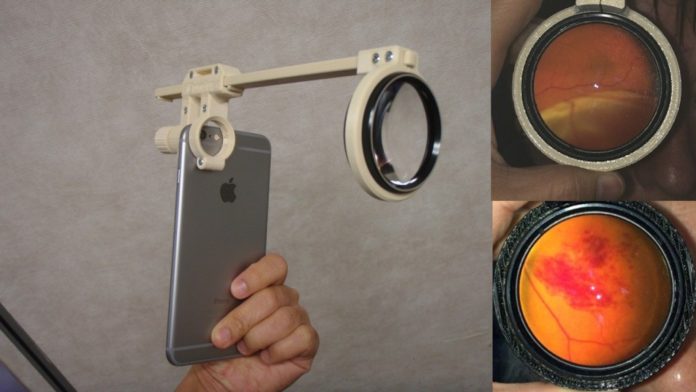
A little less than a week ago, Dr. Hong Sheng Chiong took the TEDxAuckland stage with a blow to the audience. An eye doctor born and raised in Borneo, medically trained in Ireland, and now practicing in Gisborne Hospital, New Zealand. One of the first speaker to receive a overwhelming response from the two thousand strong audience. He concluded his speech with “Ending preventable blindness is my fight, what’s yours?” and deservedly received the first standing ovation in two years.
It all started, as so many good things do, with a box full of fake eyeballs. A curious eye doctor doing a diploma in Ophthalmic Science in Dunedin, New Zealand, was using the fake eyes not as we might do, to scare our little sisters, but instead to practice performing retinal scans. Once he had gotten his fill of fakes, he turned to scanning anyone who would sit still long enough: his wife, his baby, his grandmother, and even a very surprised fish. He was able, after practice, to obtain reasonably clear results but we wouldn’t be writing about him if he had stopped there.
He was capturing images of the retina using his smartphone. However, the process was unreliable because it requires taking a picture of an extremely still subject through a handheld examination lens while holding a smartphone with the other hand. He then drew the design and posted it up on his social media page. Within a day, he got dozens of responses and some people were even ready to buy his device that he just drew.
Not ready to give up, he began to draw out his ideas for creating a single unit adaptor that would hold both the lens and the smartphone. This way, he would have one hand free to, in his words, “secure the patient.” He quickly realized that although he understood the problem very well, he was not equipped to create its solution. He was, however, aware of 3D printing and prototyping as it has become a regular part of medical news at an ever increasing rate.
He started to assemble a team that could help him bring his idea from wishful thinking to actual production. He asked Daniel Dillen, a product designer and 3D printing specialist from Vivenda, and Hanna Eastvold-Edwins, a product and mechanical engineer from The Popcorn Collective, for help. Despite the semi-miraculous reputation of 3D printing, he did not have particularly high hopes that they would be able to design something successfully.
He soon found that he had grossly underestimated his team’s abilities. The first fully functional prototype, printed in biodegradable PLA plastic, allowed for a 40 degree field of view of the retina. That may not mean much to the layperson, but it is comparable to that which can be obtained by a professional quality fundus camera. And to put that in perspective, a fundus machine can cost upwards of $16,000 and due to this innovation, was being replicated by a smartphone, a lens, and a handheld adaptor — all costing less than $50NZ.
The file for the 3D print will be uploaded and available freely to the public starting on May 8, 2015 from www.ophthalmicdocs-fundugs.org because of this team’s commitment to enhanced availability of high-quality eye care treatment for everyone. The design is adaptable for a wide variety of smartphones and is open source allowing for individual contributions to its continued improvement. Currently, it is only available to receive one particular lens, but that is an area in which it will most likely receive the greatest benefit from the open source model. The team is also working on other eye equipment and ultimately aims to produce all the essential eye equipment that you need in an open source and affordable method.
There is also an app in the works, OphthDocs Eye App, to provide a range of vision tests, electronic medical record keeping, and image acquisition capabilities. The beta version of the app will be release on the 22nd May 2015. So keep an eye.
